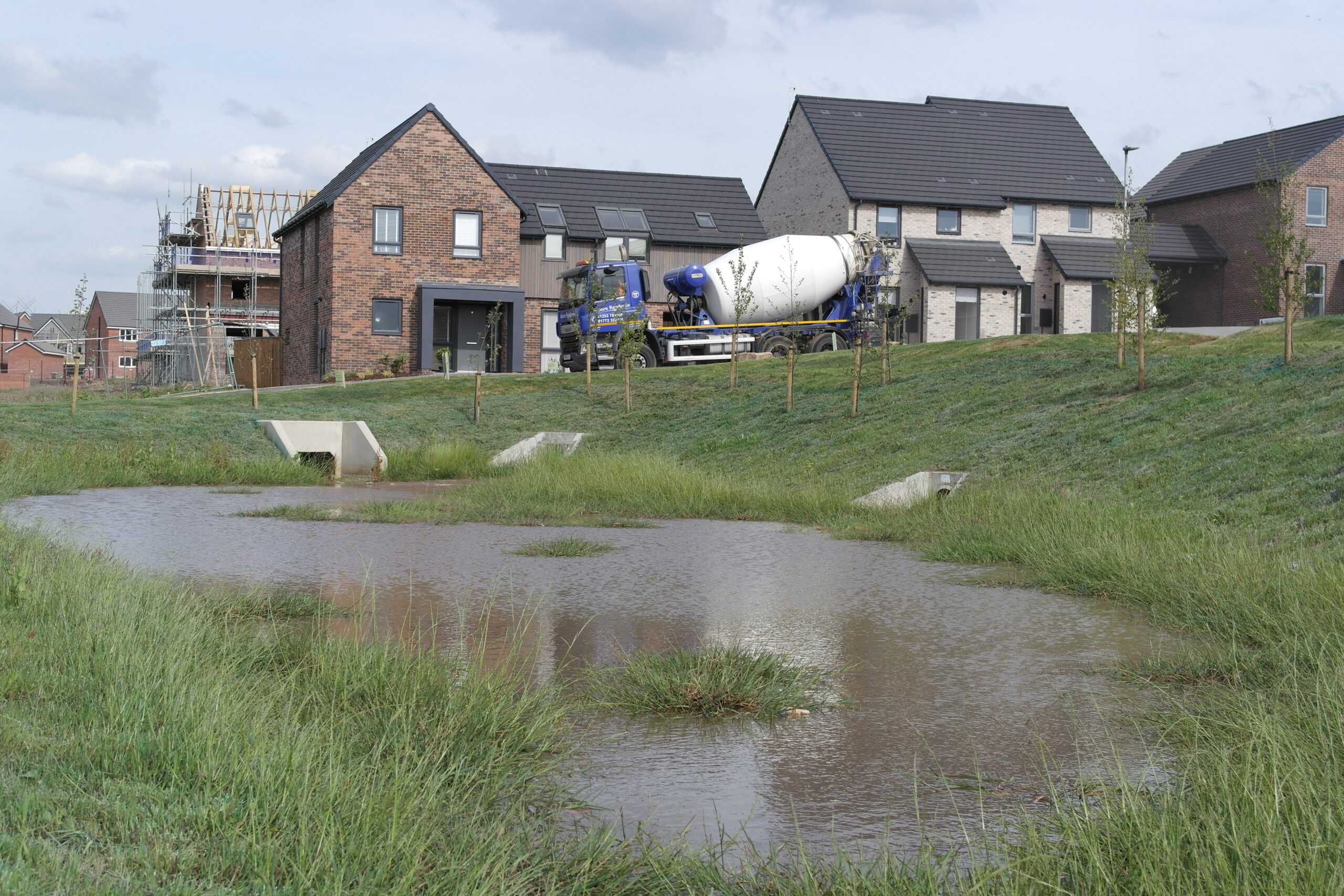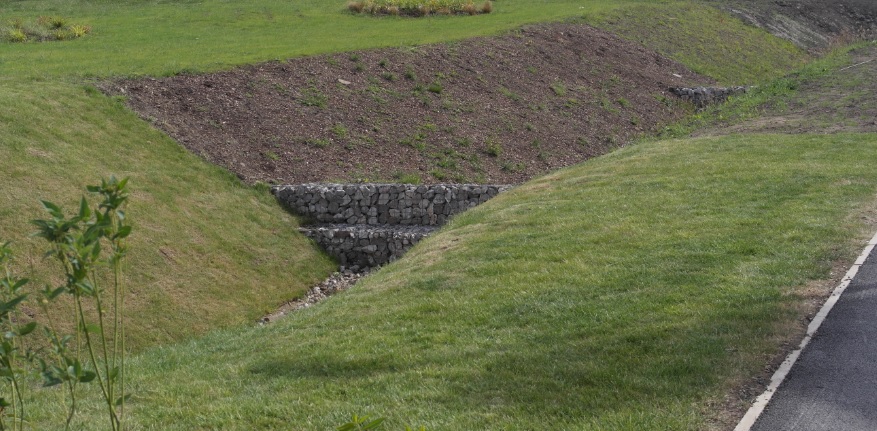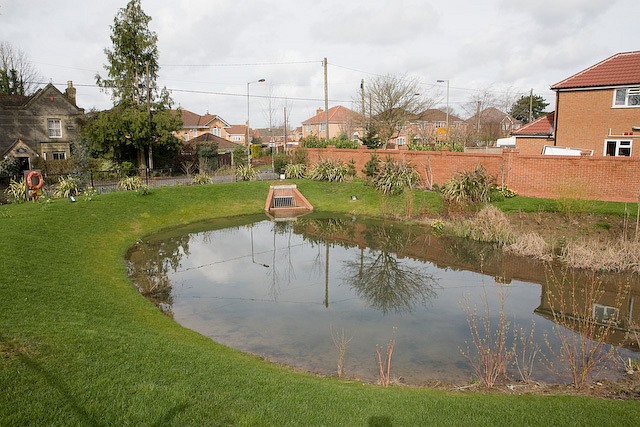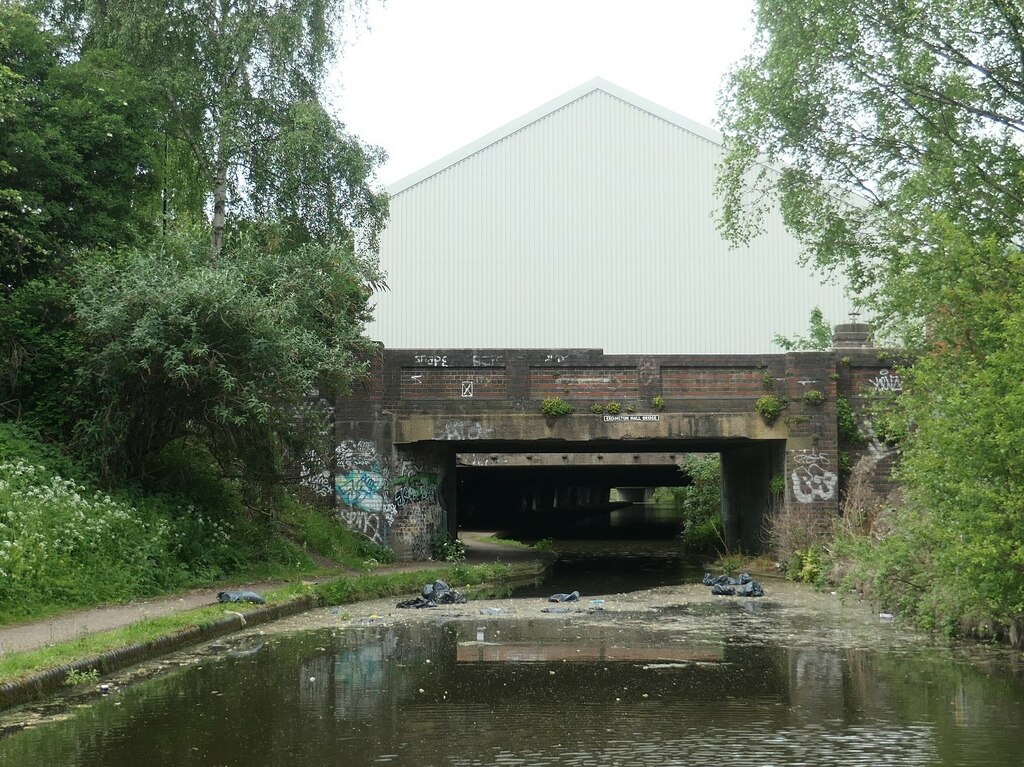This blog has been written by a member of the Newground Flood Team.
Sustainable Drainage Systems (SuDS) allow surface water to be retained for longer and released slowly which helps to alleviate surface water flood risk. But there are also lots of additional benefits provided by SuDS too.
Background
Our towns and cities are becoming more densely populated. In the UK we are told that the number of homes which must be built every year is more than 200,000. Developments are stretching out into the floodplains and greenbelt, and as we cover the land with hard surfaces, we reduce its natural ability to infiltrate surface water. With more extreme, hotter and wetter weather predicted as a result of climate change, SuDS are playing a much larger part in the management of surface water runoff.

Image: The Flood Hub
As a result of large-scale flooding in 2007, The Pitt Review was published in 2008, which focused on flood risk management. To implement the recommendations from the report, the Flood and Water Management Act 2010 was introduced, although some recommendations took several years to be enforced.
Since April 2015 it has been mandatory for planning applications on all major developments (these include ten or more homes, or on areas of 0.5 hectares or more) to include SuDS, unless they are demonstrated to be inappropriate. SuDS are already having positive impacts on the way we drain our towns and cities by allowing water to:
As a result of climate change, over the coming decades SuDS will have a larger part to play in the management of surface water runoff, but there are also lots of added benefits that can be gained from their implementation too. SuDS options may include:
Promotes infiltration and can prevent puddling on large areas. It allows water to seep through gaps between blocks or through porous material to the free draining sub base below. Sympathetic design can also result in a much more aesthetically pleasing finish than concrete or tarmac.
Can store large volumes of water when required and allow slower infiltration and evaporation. They may contain no surface water for lengthy periods of dry weather and as a result, provide green space which can enhance the biodiversity and public amenity of an area.

Image: The Flood Hub
Vegetated SuDS can store large amounts of runoff allowing sediment and pollutants to settle or be trapped and broken down by plants and bacteria. This technique also provides habitat for wildlife and amenity for residents of estates and business developments. Wetlands can also improve air quality by absorbing and removing pollution.

Balancing pond, part of Whitetree Close housing development cc-by-sa/2.0 – © Peter Facey – geograph.org.uk/p/747700
SuDS can decrease flow rates and also improve water quality before it makes its way into our rivers by trapping silt, sediment and pollutants. Surface water runoff can contain:

Irrigation, Howe of Fife cc-by-sa/2.0 – © Richard Webb – geograph.org.uk/p/3567606

Fly-tipped rubbish, Birmingham & Fazeley canal cc-by-sa/2.0 – © Christine Johnstone – geograph.org.uk/p/7214106
By implementing SuDS to better manage surface water issues, we can also gain the additional benefits of improved water quality along with more diverse green spaces for communities to enjoy and wildlife to inhabit.
Click here to download our Multiple Benefits of SuDS resource from The Flood Hub.